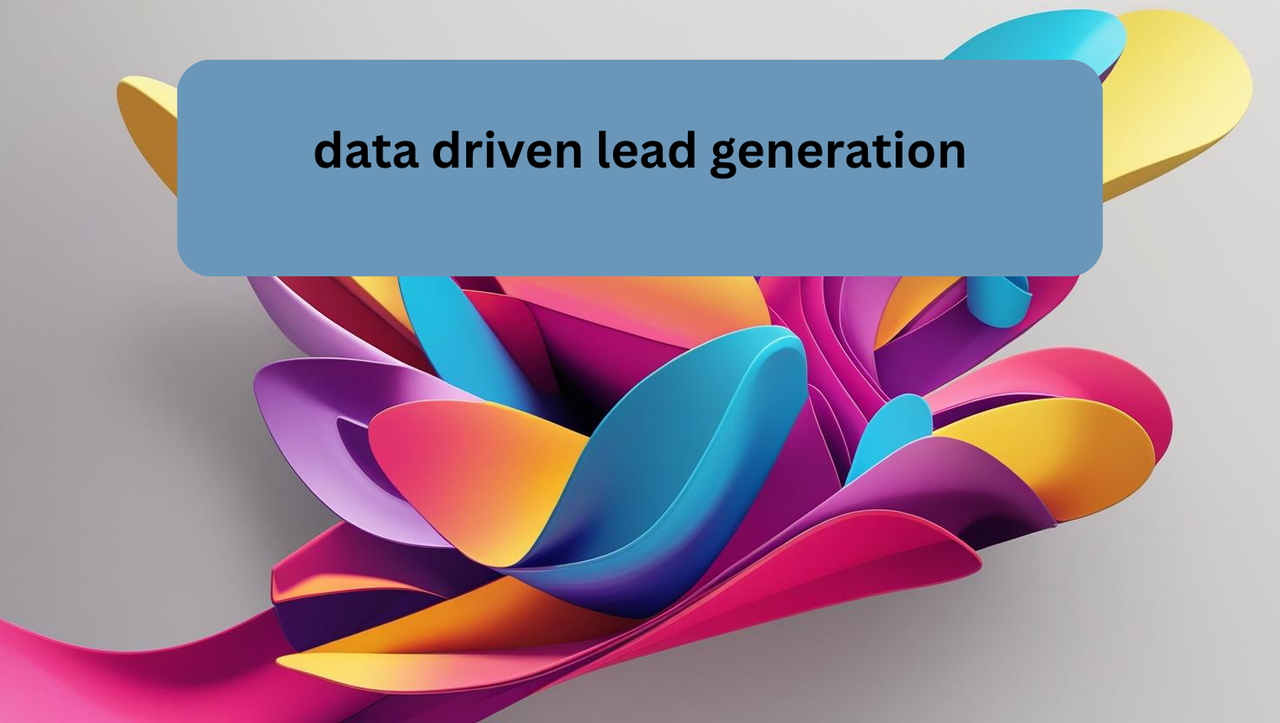Think about it like planning a party. You wouldn't invite everyone you know. Instead, you would think about who enjoys the same things as you. Data-driven lead generation is similar. You use information about people to find those who are most likely to be interested in your products or services. This makes your efforts more focused and effective. Moreover, it helps you spend your time and money wisely by targeting the right audience.
Why Data is Important for Finding Leads
Data helps you understand your current customers better. By looking at information like their age, where they live, and what they buy, you can see patterns. These patterns can help you find other people who are similar to your best customers. For example, if many of your customers are young people who like sports, you can look for more young people who like sports.
Furthermore, data can show you what kind of marketing works best. You can see which ads people click on. You can also see which emails they open. This information helps you understand what messages gambling data philippine channels are most effective for reaching potential customers. Consequently, you can focus your efforts on what works and stop doing what doesn't.
In addition, data can help you personalize your messages. When you know more about someone, you can talk to them in a way that feels more personal. For instance, if you know someone is interested in a specific type of product, you can send them information about that product. Personalized messages are more likely to grab attention and lead to more interest. Therefore, using data can make your lead generation efforts more relevant and engaging.
Key Data Points for Lead Generation
There are many types of data that can be helpful for lead generation. Demographic data includes things like age, gender, location, and job title. This information helps you understand who your potential customers are. For example, if you sell baby products, you would want to target people who have young children.
Behavioral data tells you what people do online. This includes the websites they visit, the links they click, and the content they download. This data can show you what people are interested in and what problems they are trying to solve. As a result, you can tailor your messages to their specific needs and interests.

Engagement data shows how people interact with your marketing efforts. This includes things like email opens, website visits, and social media interactions. This data helps you understand which marketing channels and messages are resonating with your audience. Moreover, it helps you identify potential leads who are actively engaging with your brand.
Technographic data provides information about the technology that companies use. This can be helpful if you are selling business-to-business (B2B) products or services. Knowing what software and hardware a company uses can help you determine if they are a good fit for your offerings. Therefore, technographic data can be a valuable tool for targeting the right businesses.
Using Data to Find Potential Customers
There are several ways to use data to find potential customers. One way is through data analytics. This involves looking at large amounts of data to find patterns and insights. By analyzing your existing customer data and market research, you can identify key characteristics of your ideal customers. Then, you can use this information to target similar people with your marketing campaigns.
Another way is through targeted advertising. Online advertising platforms allow you to target specific demographics, interests, and behaviors. By using data about your ideal customers, you can show your ads only to people who are likely to be interested in what you offer. For example, you can target people who have recently searched for terms related to your products or services.
Content personalization is also a powerful way to use data. By tracking how people interact with your website and content, you can personalize the experience for them. This might involve showing them different articles, products, or offers based on their past behavior and preferences. Personalized content is more likely to be relevant and engaging, which can lead to more leads.
Lead scoring is another important technique that uses data. This involves assigning points to leads based on their characteristics and behavior. For example, a lead who visits your website multiple times and downloads a whitepaper might receive a higher score than someone who only visits your homepage once. Lead scoring helps you prioritize your efforts and focus on the leads that are most likely to convert into customers.
Tools for Data-Driven Lead Generation
Several tools can help you with data-driven lead generation. Customer Relationship Management (CRM) systems are essential for storing and managing customer data. They help you track interactions with leads and customers, and they provide insights into your sales pipeline. Popular CRM systems include Salesforce, HubSpot, and Zoho CRM.
Marketing automation platforms help you automate your marketing tasks and personalize your communications based on data. These platforms can track website activity, send automated emails, and score leads. Examples of marketing automation platforms include Marketo, Pardot, and HubSpot Marketing Hub.
Data analytics tools help you analyze large sets of data to identify trends and insights. These tools can help you understand your customer behavior, evaluate your marketing campaign performance, and identify new opportunities for lead generation. Examples of data analytics tools include Google Analytics, Tableau, and Power BI.